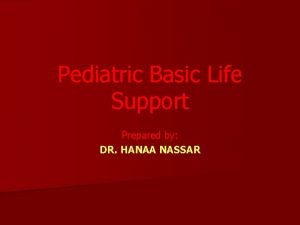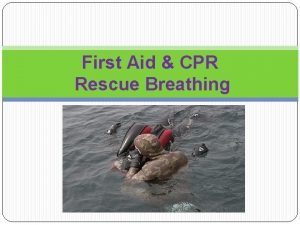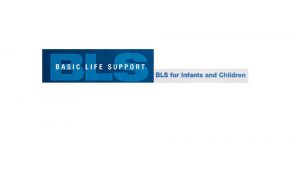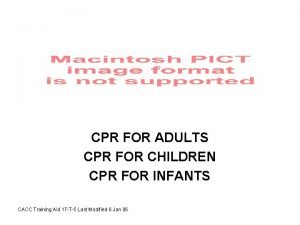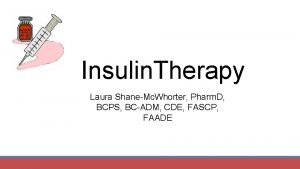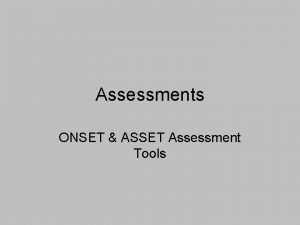CHILD INFANT CPR Child CPR 1 onset of







- Slides: 7

CHILD & INFANT CPR

Child CPR (1 - onset of puberty) CPR FOR CHILDREN IS SIMILAR TO PERFORMING FOR ADULTS. THERE ARE, HOWEVER, 3 DIFFERENCES. 1) IF YOU ARE ALONE WITH THE CHILD GIVE TWO MINUTES (5 CYCLES) OF CPR BEFORE CALLING 911 2) USE THE HEEL OF ONE HAND FOR CHEST COMPRESSIONS 3) COMPRESS AT A DEPTH OF ABOUT 1 -1. 5 INCHES

Infant An infant is considered a child under the age of 12 months. An infant has a much better chance of survival if CPR is performed immediately. If another person is present, tell them to call 911 while you start CPR. If you are alone with the infant, do not dial 911 until after you have made an attempt to resuscitate the victim.

Responsiveness To check an infant for responsiveness, gently tap or flick the feet and as if the infant is “OK”. If there is no movement or sound from the baby, immediately check the airway.

C = Circulation Begin with chest compressions. Infant chest compressions are performed with 2 (the middle and index) fingers. Compress on the sternum just below the nipple line. The ratio of compressions is 30 for every 2 puffs (breaths). Count out loud as you deliver the compressions. The compression depth is about 1 ½ inches.

A = Airway Next, Open the Airway: If no breathing is detected, gently tilt the victim's head backward by lifting the chin. Do not overextend the neck because this could result in closing off of the airway.

B = Breathing Cover the infant’s nose and mouth with your mouth. Make sure you create a seal. Give the infant a quick gentle puff (breath) from your cheeks. Give the victim a chance to exhale and repeat with another gentle puff (breath).
